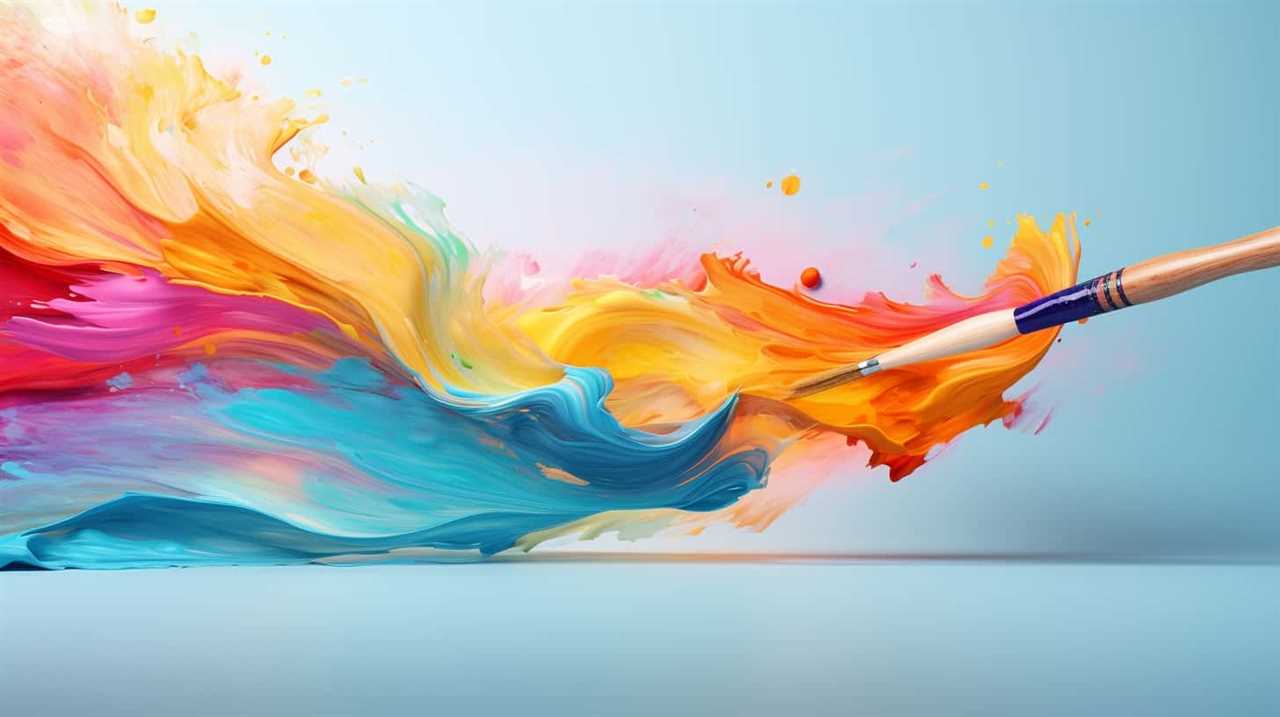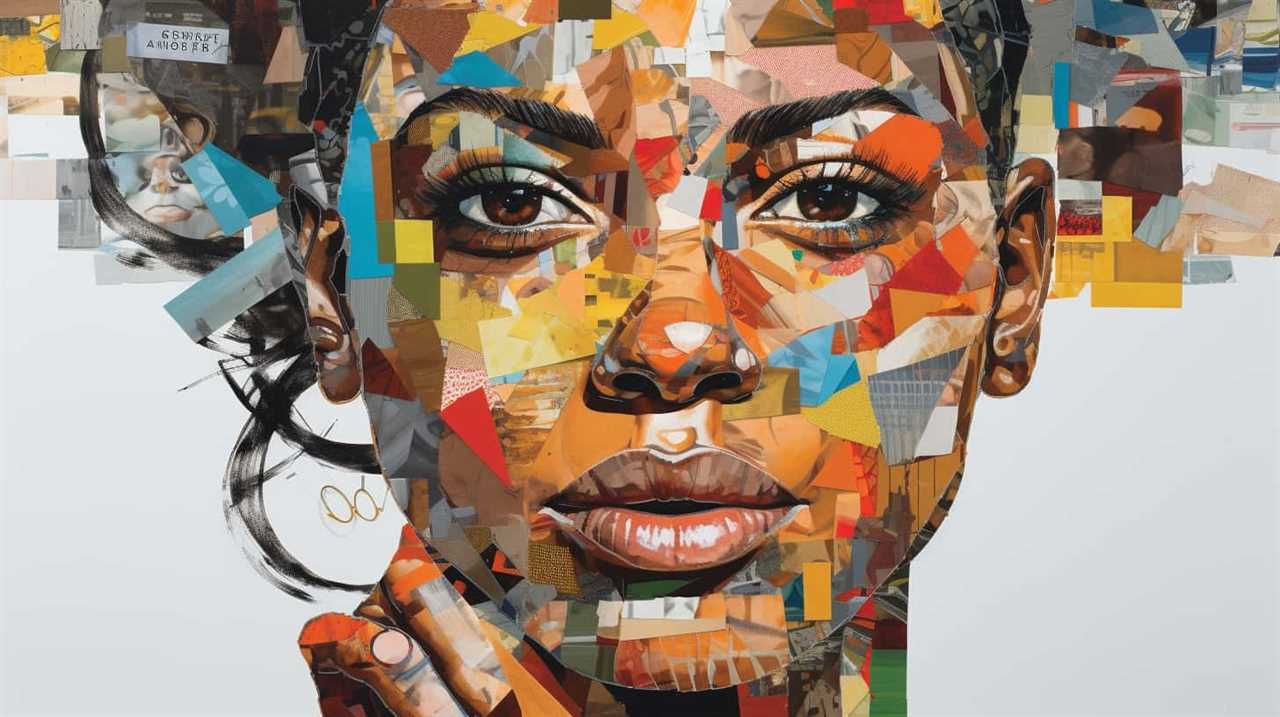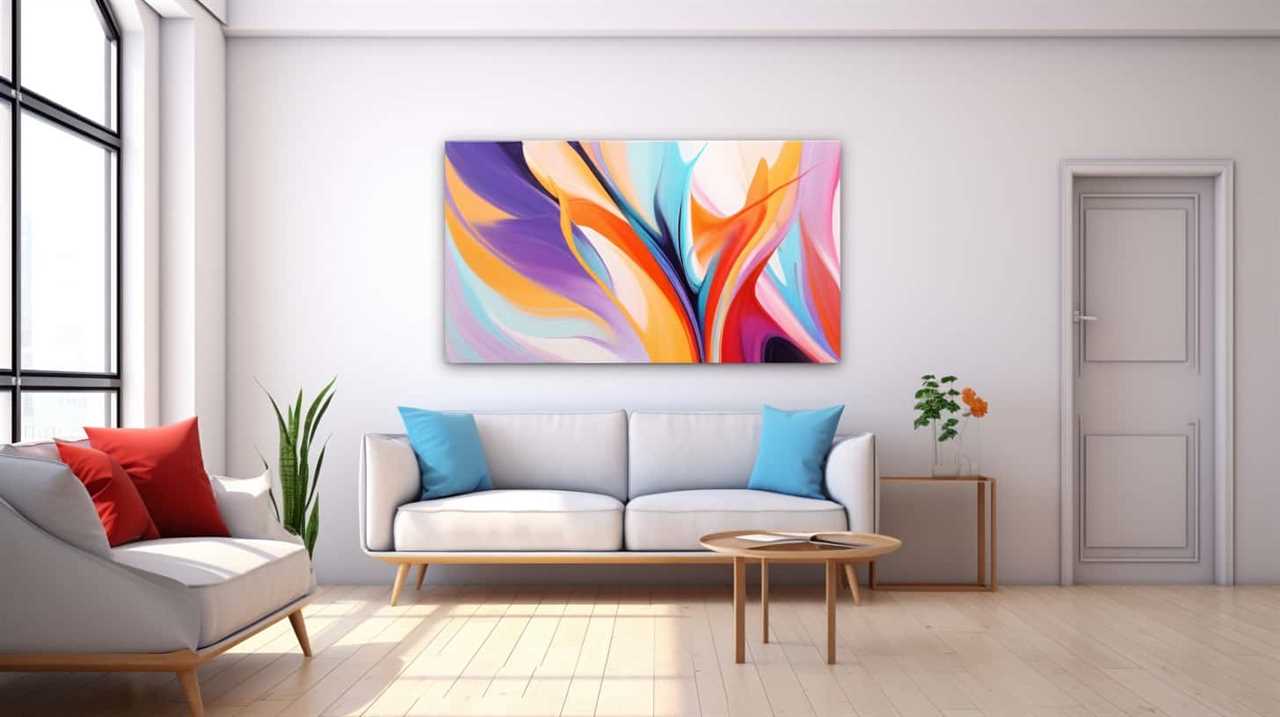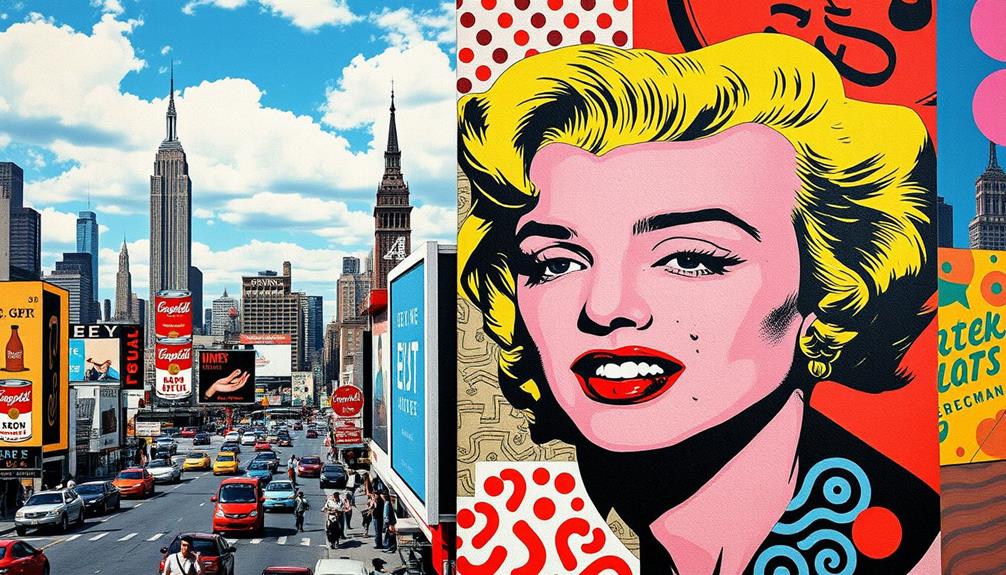Have you ever thought about why commercialization has altered the way we value art? Let’s explore the intriguing intersection of art and commerce.
You may not be aware of this, but the influence of commercialization on artistic value is profound and transformative. As a society seeking liberation, it is crucial to understand how the art market dynamics have been impacted.
The creative process of artists has also been shaped by commercial pressures. Moreover, the very notion of artistic authenticity has undergone a shift due to commercialization. We will explore how these changes have altered our patterns of consuming art, and the challenges faced by gallery owners and artists alike.
Get ready to uncover the intricate connections between commercialization and artistic value!

Key Takeaways
- Commercialization has shifted the focus of the art market from artistic merit to consumer demand.
- Artists are pressured to create artworks that cater to popular tastes, leading to a homogenization of artistic expression.
- The commodification of art has undermined artists’ intrinsic motivation and creativity.
- The concept of artistic authenticity has evolved, with market value and popularity now often defining authenticity.
Impact on Art Market Dynamics
Commercialization has had a profound impact on the dynamics of the art market. The ever-evolving art market trends and pricing strategies have been significantly influenced by the commercialization of art. The commodification of art has transformed the way artworks are valued, perceived, and consumed.
Art market trends have become driven by consumer demand rather than artistic merit. With the rise of social media and online platforms, the art market has become more accessible and globalized. This accessibility has led to an increase in demand for certain types of art, resulting in a shift in market trends. Artists are now pressured to create artworks that cater to popular tastes and preferences in order to secure sales and success in the market.
Moreover, pricing strategies have undergone a drastic change due to commercialization. The value of an artwork is no longer solely determined by its artistic value or cultural significance. Instead, it’s influenced by market demand, reputation of the artist, and perceived investment potential. This has led to inflated prices for certain artworks, creating a gap between the value of the artwork and its actual artistic worth.
The impact of commercialization on the dynamics of the art market is undeniable. However, it’s essential to consider how this transformation has also affected the artists themselves. The next section will explore the influence of commercialization on the artist’s creative process.

Influence on Artist’s Creative Process
Our creative process as artists has been profoundly influenced by the impact of commercialization. The commodification of art has shifted our focus from intrinsic motivation to extrinsic rewards. In the pursuit of financial success, artists may find themselves compromising their artistic expression, leading to a dilution of their unique voice.
Intrinsic motivation, the internal drive to create for the sake of personal fulfillment and artistic expression, is essential to the creative process. However, commercialization often introduces external pressures, such as market demands and financial considerations, which can undermine this intrinsic motivation. The need to cater to popular trends or produce art that sells can stifle an artist’s creativity and limit their ability to explore new ideas and techniques.
Moreover, the commodification of art has led to a homogenization of artistic expression. As artists strive to meet market expectations, they may feel compelled to produce work that aligns with prevailing trends and tastes. This conformity can restrict individuality and originality, as artists may be discouraged from exploring unconventional or controversial themes.
Furthermore, the commercialization of art has increased the emphasis on the market value of artworks rather than their artistic merit. This shift in focus can impact an artist’s creative process by encouraging the production of commercially viable pieces rather than authentic, meaningful works of art.

Changing Perceptions of Artistic Authenticity
With the rise of commercialization, our perception of artistic authenticity has undergone significant changes. The changing definitions of artistic authenticity have been influenced by the evolving audiences that art now caters to. In the past, authenticity was often associated with the originality and uniqueness of an artwork, reflecting the artist’s personal expression and vision. However, in today’s commercialized art world, authenticity has taken on a different meaning.
In a market driven by profit and mass production, the concept of authenticity has become more fluid. Artistic authenticity is now often measured by its market value and popularity rather than its originality or artistic merit. This shift in perception has led to a dilution of artistic authenticity, as artists are pressured to create works that sell rather than those that truly express their individuality and creativity.
Furthermore, the evolving audiences play a crucial role in shaping the perception of artistic authenticity. As the art world becomes more accessible and widespread, audiences with varying tastes and preferences emerge. This diversification of audiences has led to a fragmentation of artistic authenticity, with different groups defining it in their own unique ways. Some may prioritize the emotional and personal connection to the artwork, while others may focus on the artist’s technique or concept.
Shift in Art Consumption Patterns
How has the rise of commercialization affected the way we, as art consumers, engage with and consume art? The shift in art consumption patterns can be attributed to the following factors:

- Digital revolution: The advent of the internet and digital technology has transformed the way we access and experience art. Online platforms have made art more accessible, allowing us to view and purchase artwork from the comfort of our own homes. This has democratized the art world, breaking down barriers of entry and giving artists a wider audience.
- Globalization and cultural exchange: Commercialization has facilitated the exchange of artistic ideas and styles on a global scale. Through international art fairs, galleries, and exhibitions, we now have access to a diverse range of art from different cultures and backgrounds. This has enriched our understanding of art and expanded our artistic horizons.
- Consumerism and commodification: The commercialization of art has also led to a shift in our consumption patterns. Art is increasingly seen as a commodity, with a focus on market value rather than artistic value. This has led to the rise of art as an investment, where collectors and investors seek to profit from the appreciation of artwork.
- Changing dynamics of art institutions: Commercialization has influenced the way art institutions operate. Museums and galleries are now more focused on attracting visitors and generating revenue. This has resulted in a shift towards blockbuster exhibitions and popular, marketable art, sometimes at the expense of more challenging or experimental forms of art.
Challenges Faced by Gallery Owners and Artists
The rise of commercialization has presented gallery owners and artists with a multitude of challenges to navigate in their pursuit of artistic value. Two key challenges that they face are financial sustainability and the need to develop effective marketing strategies.
Financial sustainability is a major challenge for gallery owners and artists in today’s commercialized art world. With the increasing costs of rent, utilities, and staff, it becomes difficult for galleries to maintain a stable income. Artists, on the other hand, struggle to make a living solely from their artwork due to the pressure to produce marketable pieces. This financial strain often leads to compromises in artistic integrity, as artists and gallery owners may feel compelled to cater to popular trends rather than explore their own unique visions.
In addition to financial challenges, gallery owners and artists must also grapple with the need to develop effective marketing strategies. In a commercialized art industry, where success is often measured by sales and popularity, artists and galleries must find ways to stand out and attract buyers. This requires a deep understanding of target audiences, effective branding, and innovative promotional techniques. Moreover, the rise of digital platforms and social media has added an extra layer of complexity to marketing efforts, as artists and galleries must now navigate the online world to reach a wider audience.
Frequently Asked Questions
How Has the Commercialization of Art Affected the Role of Art Critics and Their Influence on the Art Market?
The role of art critics and their influence on the art market have been significantly impacted by the commercialization of art. This has led to a shift in power dynamics and a potential loss of objectivity in evaluating artistic value.

What Impact Does Commercialization Have on the Pricing and Valuation of Artworks?
Pricing impact and artistic value intertwine under the influence of commercialization. The commodification of art shifts focus towards profitability, altering the perception and evaluation of artworks. This transformation challenges traditional notions of artistic worth and liberates the art market.
How Has the Commercialization of Art Influenced the Development and Growth of Art Fairs and Biennials?
Art fair expansion and biennial sponsorship have been profoundly influenced by the commercialization of art. The quest for profit has shifted focus away from artistic value, resulting in a commodification of artworks and a loss of artistic integrity.
What Challenges Do Emerging Artists Face in Navigating the Commercial Art World?
Challenges faced by emerging artists in navigating the commercial art world include limited exposure, difficulty in finding representation, and pressure to conform to market demands. However, there are also opportunities for growth, recognition, and financial success.
How Does the Commercialization of Art Affect the Accessibility and Affordability of Art for the General Public?
The commercialization of art has significantly impacted the accessibility and affordability of art for the general public. It has created barriers and limitations, hindering the liberation and enjoyment of artistic expression for all.

Conclusion
In conclusion, the commercialization of art has undeniably altered its artistic value. The art market dynamics have been greatly impacted, leading to a shift in the perception of artistic authenticity.
Artists themselves have also been influenced in their creative process, often catering to market demands rather than pursuing their own artistic visions.
Additionally, the changing patterns of art consumption have presented challenges for both gallery owners and artists.
All in all, the idiom ‘selling out’ comes to mind, as the pursuit of profit sometimes compromises the true essence and integrity of art.

Lauren’s talent in writing is matched by her passion for storytelling. Her love for books and deep understanding of culture and entertainment add a distinct flavor to her work. As our media and press contact, Lauren skillfully bridges the gap between afterQuotes and the broader media landscape, bringing our message to a wider audience.










